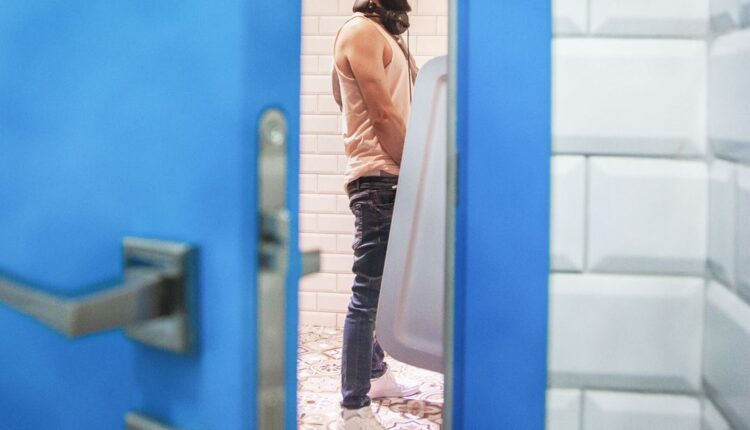It can be disturbing to stand there and pee like everything’s fine but all of a sudden notice that what’s in the bowl isn’t pale yellow and clear; it’s weirdly cloudy. According to Poone Shoureshi, M.D., a urologist at Cedars-Sinai Medical Center in Los Angeles, cloudy urine can simply be the result of changes in urine pH, or urine chemistry. That’s not as alarming as it sounds. “The more alkaline in your urine, the more cloudy it can be,” she explains. “This is usually due to a diet high in fruits and vegetables.”
Unsurprisingly, cloudy urine by itself is not a cause for concern if this is the cause, says Dr. Shoureshi. However, cloudy urine can be a symptom of other potentially more serious conditions, including these:
You have a urinary tract infection
Cloudy urine can be a side effect of a urinary tract infection (UTI), Dr. Shoureshi says. However, if this is what you’re dealing with, the appearance of your pee is probably the least of your concerns.
More From Men’s Health

“An infection is usually associated with other symptoms such as pain with urination or blood in the urine,” she says. If you’re experiencing any of the above, call a doc for a proper diagnosis and meds to clear it up. Don’t think these are things that just happen to women; they’re not unusual in men, so don’t blow off the possibility of a UTI. Get it checked out.
You’re dehydrated
If you’ve been sweating a lot and skimping on liquids, don’t be surprised that your stream isn’t looking as it typically does. Changes in fluid intake can change the color and consistency of urine, Dr. Shoureshi says. The quick and obvious fix: by simply returning to drinking the recommended daily amount of water. That’s technically 125 ounces, or a little more than 3½ liters for men, according to The National Academies of Science, Engineering and Medicine—but it’s not a hard and fast rule. Most people get some of the hydration they need through food. Here, a urologist breaks down how much water you should actually be drinking. When you get what you need, your urine should return to a normal, pale yellow, not-cloudy color.
You have a kidney stone
Cloudy urine can also be a symptom of passing a kidney stone, as the stone can break into smaller pieces that make urine appear cloudy to the naked eye, Dr. Shoureshi says.
As with a UTI, though, cloudy urine may not be your only sign of a kidney stone. According to Dr. Shoureshi, a kidney stone usually presents with flank (i.e. the side of the body between the ribs and hip) pain that comes and goes, and the pain often radiates to the groin. There may also be blood in the urine from the stone passing, fevers, and chills. Definitely not something to ignore.
You’re experiencing retrograde ejaculation
According to Mayo Clinic, retrograde ejaculation, sometimes referred to as a “dry orgasm,” is the result of semen entering the bladder instead of being released through the penis during orgasm, resulting in ejaculating little or no semen. While not harmful, it can lead to male infertility, and can result from certain prostate procedures and/or medications, Dr. Shoureshi says.
So, when should you see a doctor for cloudy urine?
If you simply have cloudy urine and have taken note that your hydration isn’t up to par, upping your fluid intake may be all you need to do to get things looking normal again. But if you experience cloudy urine along with other symptoms such as blood in the urine, flank pain, pain with urination, or fevers, definitely call your doctor, Dr. Shoureshi says.

Emilia Benton is a Houston-based freelance writer and editor. In addition to Women’s Health, she has contributed health, fitness and wellness content to Runner’s World, SELF, Prevention, Healthline, and POPSUGAR, among other publications. She is also a 10-time marathoner, frequent traveler and avid amateur baker.


Comments are closed.